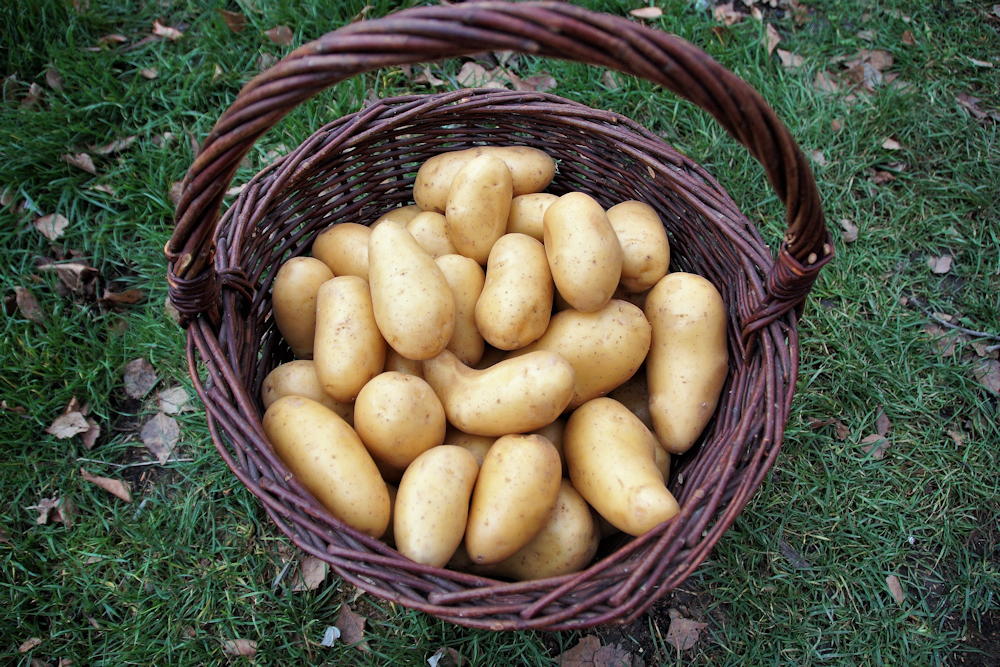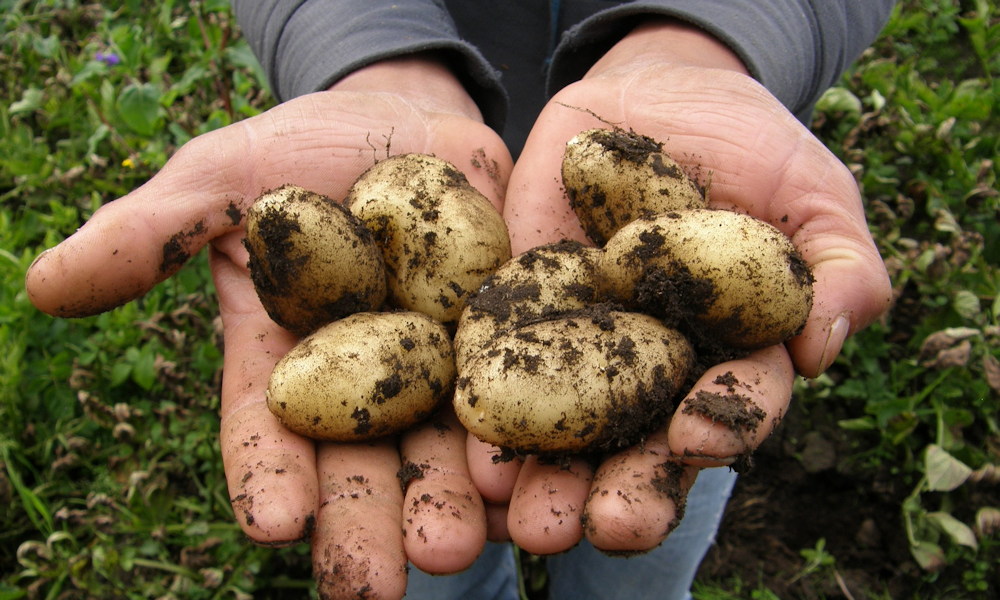Potatoes, the versatile and beloved tubers, are a rewarding addition to any home garden. Harvesting these earthy delights is not only gratifying but also a skill that can be perfected over time. In this guide, we will walk you through the process of harvesting potatoes step by step, provide some valuable tips and dispel common misconceptions to ensure your potato harvest is bountiful and satisfying.
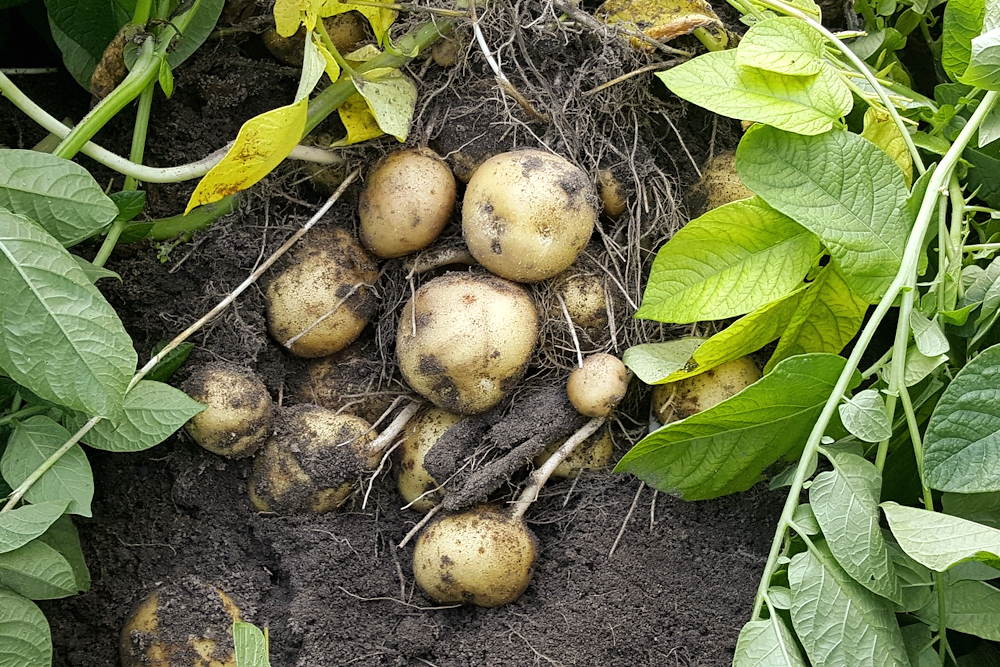
Harvesting Potatoes Step by Step: Unearthing Gold from the Soil
When the foliage of your potato plants begins to yellow and wither, it’s a sign that the time has come to harvest your precious potatoes. Here’s a step-by-step guide to ensure a successful harvest:
- Timing is Everything: Wait until at least two weeks after the foliage has died back before digging up your potatoes. This allows them to mature fully underground.
- Gently Loosen the Soil: Use a garden fork or shovel to carefully loosen the soil around the potato plants. Be cautious not to damage the tubers in the process.
- Digging In: Gently dig under the plant, starting at the perimeter and working your way towards the center. Lift the potatoes out of the soil one by one, taking care not to bruise or cut them.
- Inspect and Sort: Examine your harvest for any damaged or diseased potatoes, and set them aside. Healthy ones can be brushed off gently to remove excess soil, but never wash them before storing.
- Curing and Storage: Allow your freshly harvested potatoes to cure in a cool, dark and well-ventilated area for about two weeks. After curing, store them in a cool, dry and dark location to prevent sprouting and prolong their shelf life.
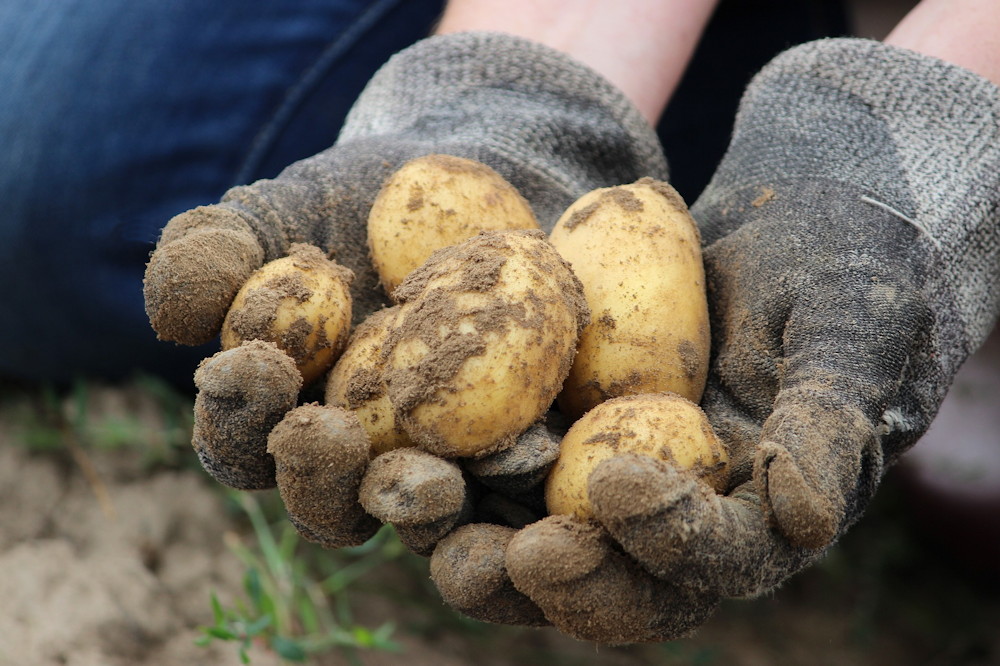
Harvesting Hacks
- Harvest in Dry Weather: It’s best to harvest your potatoes on a dry day. Wet soil can be heavy and cling to the tubers, making the process more challenging.
- Handle with Care: Potatoes are sensitive to bruising and cuts. Handle them gently during the harvesting process to prevent damage.
- Mulching Magic: Mulching your potato plants can make harvesting easier by preventing the tubers from growing too deep in the soil and protecting them from sunlight, which can turn them green and bitter.
- Storage Strategy: To prolong shelf life, store your potatoes in a burlap sack, a paper bag or a wooden crate in a cool, dark place, ideally between 45-50°F (7-10°C).
- Replant the Best: Save the healthiest, unblemished potatoes as seed for next year’s crop. This ensures that you’re starting with strong genetics and quality tubers.
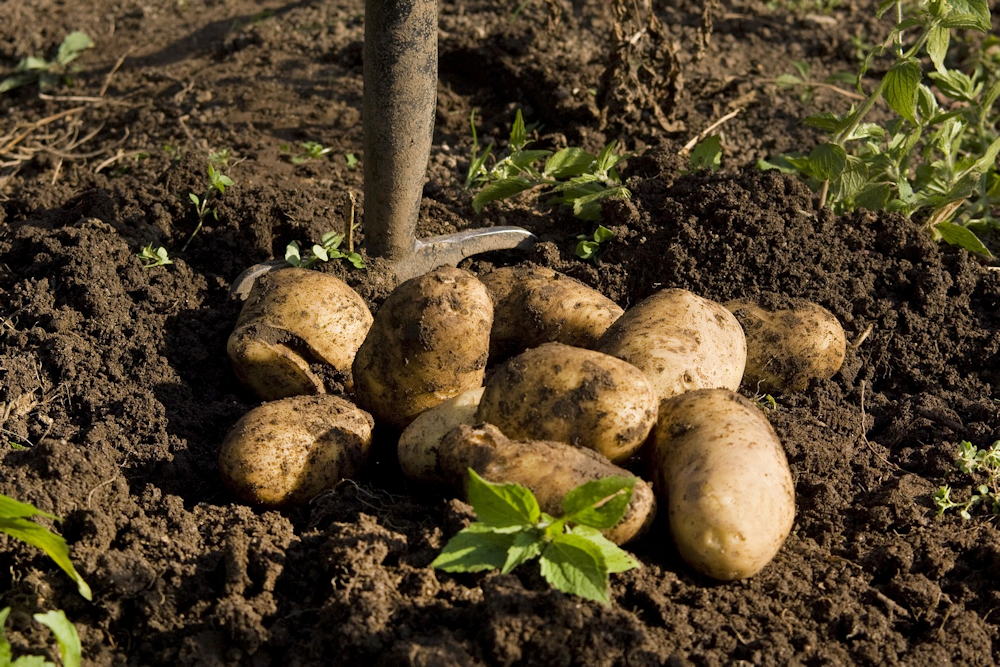
Common Misconceptions about Harvesting Potatoes: Debunking Potato Myths
- Myth: You must harvest all potatoes at once.
Refutation: Potatoes can be left in the ground for a while after the foliage dies back. Harvest them as needed to enjoy fresh potatoes throughout the season. - Myth: Washing potatoes right after harvesting is essential.
Refutation: Washing potatoes immediately can lead to moisture, promoting rot during storage. Wait until you’re ready to cook them to wash them. - Myth: Potatoes should be exposed to sunlight for a while to sweeten them.
Refutation: Sunlight exposure can make potatoes turn green and develop a bitter taste. Keep them in the dark to prevent this. - Myth: Potato harvesting requires a lot of digging and effort.
Refutation: With the right tools and a gentle touch, harvesting potatoes can be a relatively straightforward process that doesn’t require excessive digging.
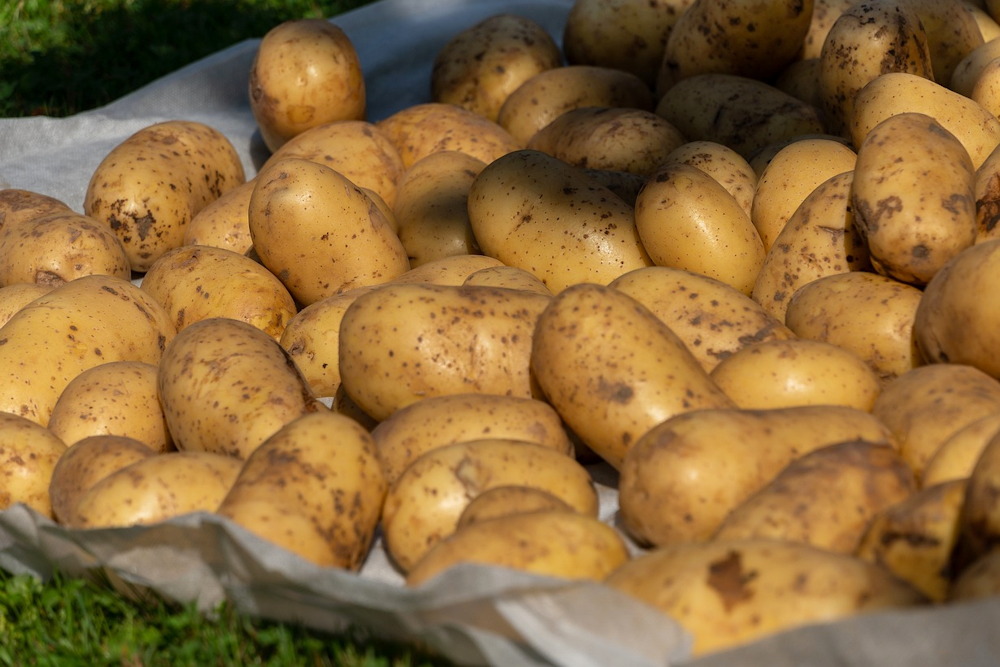
Harvesting Potato Treasures
As you venture into the world of potato harvesting, remember that patience, care and a little knowledge go a long way. The joy of unearthing your own potatoes and savoring their delicious flavors is well worth the effort. With these steps, tips and the debunking of common myths, you’re well-equipped to embark on a successful potato harvesting journey that will yield a rich and tasty bounty for years to come. Happy harvesting!
